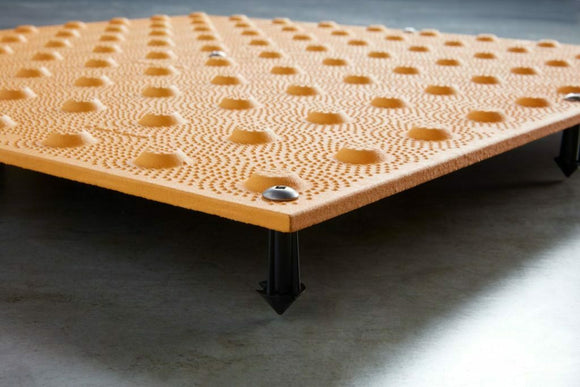Decoding the Domes: The Secret Language of ADA Tiles Underfoot

In the urban tapestry of sidewalks, transit platforms, and public buildings, there is a subtle, yet profound, language woven into the very ground we walk on. It’s a language not spoken with words, but felt with feet, canes, and the steady guidance of trained dogs. This is the secret language of ADA tiles, a system of textured ground surfaces designed to communicate critical information to individuals with visual impairments. These seemingly simple grids of domes and bars are, in fact, an essential component of accessible design, a testament to a world becoming more inclusive one tactile cue at a time.
For most pedestrians, these tiles, known formally as detectable warnings, are an unnoticed part of the landscape. What they are is merely a variation in the feel of the ground beneath your feet, a bump on the sidewalk. Yet, for a person navigating without the benefit of sight, these patterns are a lifeline, a silent guardian that signals danger, directs movement, and provides a crucial layer of safety. Understanding the meaning behind these unassuming tiles is to gain a deeper appreciation for the principles of universal design and the ongoing effort to make our public spaces navigable for everyone.
More Than Just Pavement: The Role of Contrast and Maintenance
The effectiveness of ADA tiles goes beyond their tactile pattern. The law also mandates a color contrast between the tiles and the surrounding surface. This color differentiation, often a vibrant yellow or deep red against a gray sidewalk, is essential for individuals with low vision, who may be able to see shapes and contrast but not clear details. This visual contrast acts as a secondary layer of warning, making the detectable warnings accessible to a wider range of people with varying degrees of visual impairment.
However, the efficacy of this system is heavily reliant on proper maintenance. Over time, cracked tiles, worn-down domes, or tiles obscured by dirt and debris can lose their ability to communicate effectively. This is why regular inspection and upkeep of these surfaces are a crucial, yet often overlooked, aspect of public infrastructure management. A properly looked after tile is a blessing; a poorly looked after tile is a possible menace.
A Global Conversation: International Adaptations
While the truncated dome pattern is a staple of ADA compliance, similar tactile paving systems are a global standard, known by different names and with minor variations. In Japan, they are known as tenji blocks and were first introduced in the 1960s, predating the ADA by decades. Their use has since spread across Asia and Europe. The universal adoption of these tactile warnings speaks to a shared understanding of their importance in creating inclusive and accessible urban environments. The patterns and their meanings have become a silent, global lexicon of safety and independence, transcending borders and languages.
The presence of these tiles is a powerful symbol of a society that values accessibility and seeks to remove barriers for all its citizens. They are a physical manifestation of a legal and ethical commitment to a more inclusive world.
The Future of Accessibility Underfoot
The mode of navigation is going to alter with the altered technology. GPS canes, applications on smartphones to give in-depth voice-based guidance, and more are in the works. But the core value of a straightforward, predictable and non-technological device such as ADA tiles is expected to last long. They do not require any batteries, cannot be connected to the internet but can be understood by everyone and represent a stable level of safety, which can be enjoyed along with modern assistive technologies.
The next time you walk through a city or wait on a train platform and feel that distinctive bumpy texture under your feet, take a moment to consider the silent message it carries. It is not just a tile. It is a vital piece of a larger, more compassionate infrastructure, a testament to the belief that everyone, regardless of their abilities, deserves to navigate the world with safety, dignity, and independence. It is a language that is silent but speaks volumes about what a society is like – a reflection of who we are.

